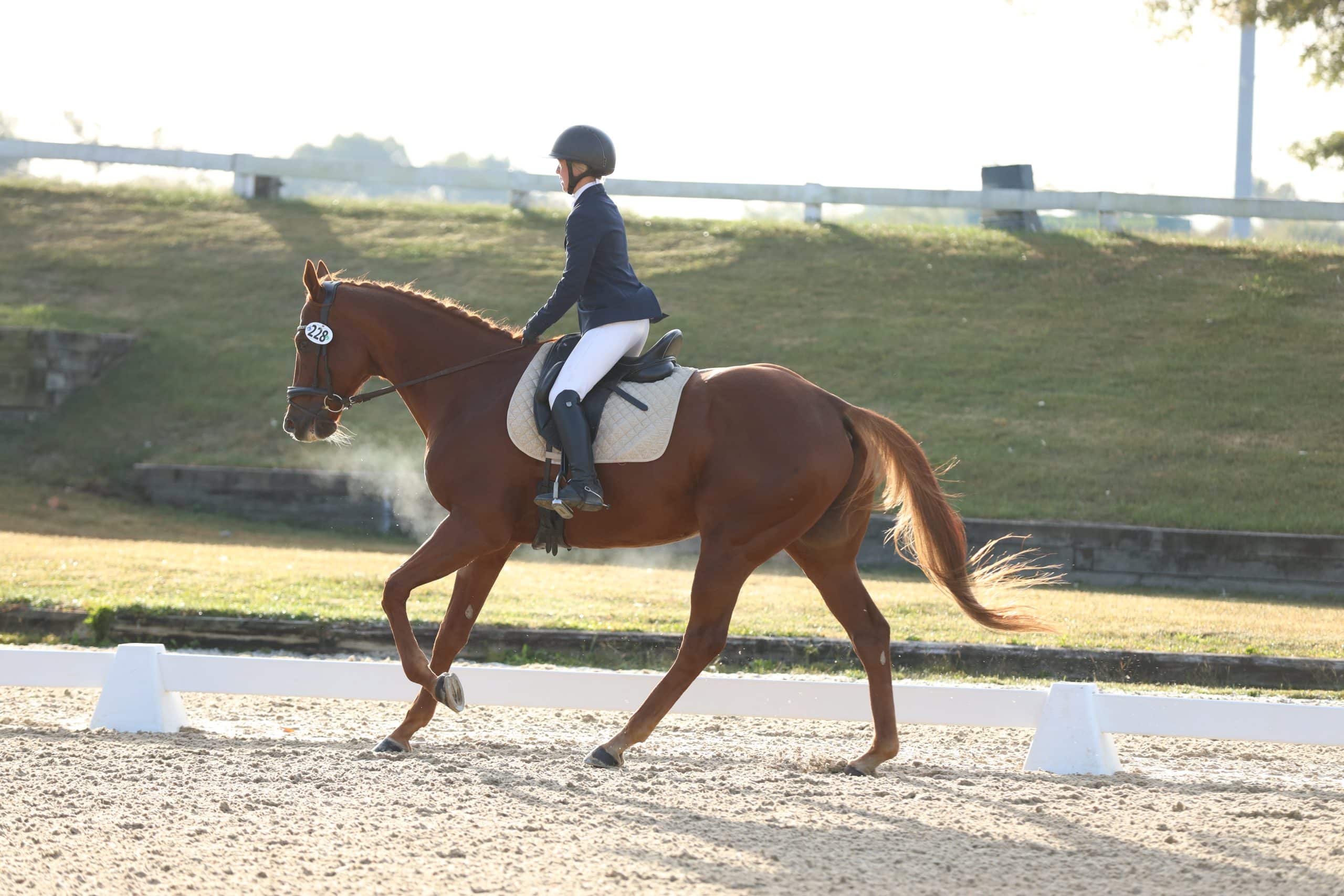
When young racehorses are first taught to change leads, the “ask” primarily comes from a shift in the rider’s body weight, says Beckman. Photo by Morgan Hampton
Q: I’m having a hard time getting a clean lead change from my OTTB, but I’ve watched enough racing to recognize he knows how to do them. How can I adjust the way I’m asking so we’re speaking the same language?
A: All horses that raced and most horses that made it to racetrack training are taught to change their canter leads. In American flat racing, the horse is on its right lead on the straightaway and the left lead through the turn. In morning exercise, the riders are very aware of what lead the horses are on and make a point to teach them to change leads at the appropriate place on the track.
When young racehorses are first taught to change leads, the “ask” primarily comes from a shift in the rider’s body weight. Often, youngsters arrive at the track for training (especially at smaller training centers) without having cantered under saddle. In those cases the rider doesn’t have the advantage of using a circle or figure eight to teach the horse to change its balance in the canter. Exercise riders usually ride with longer irons than jockeys on race day, so they can use their legs to “bump” the horse onto the new lead. For example, to change from the right to left lead, the rider will bump with the right leg and give a tug on the left rein while shifting their body weight firmly to the left to change the horse’s balance and ask for the switch. Eventually all it takes is a squeeze or nudge of the left rein to achieve the change.
Here are a couple of things to remember when you first start asking your OTTB for lead changes in an arena: First, it’s important to let go of his face when you’re asking for the change. Keep it simple in the beginning. It’s OK to give his head away, stay off his back in a light half seat and use just the one rein and leg to ask for the lead change. It’s very important to allow the horse to feel able to go forward and not restricted as he organizes his legs through the change. If a horse is a bit sticky when learning to change on the track, we frequently accelerate into the lead change.
Another concept to keep in mind is racehorses are always asked for lead changes in the exact same places on the track. Experienced horses almost always change leads automatically without being asked because they have been taught where to change. Practicing the lead change consistently in the same place in the arena every time will go a long way in establishing a clean change.
If you’re having trouble getting a clean change, try this exercise: Begin going counterclockwise. Pick up the right lead (the “wrong” lead this direction) at the top of the long side of the arena. As you enter the corner onto the short side ask for a lead change to the left lead, remembering to simplify your aids and let go of his face. You can also use a sharp tap with a crop on his right shoulder as you ask. I like to repeat this exercise in the same place in the arena until I’m getting a consistent clean change and then begin to finesse it by adding components like maintaining proper bend or staying round.
When schooling the change from left to right, canter counterclockwise on the left lead through the short side of the arena and ask for the right lead as you come onto the long side.
Sometimes it takes a horse getting a little tired on one lead to get him to want to change to the other. On the track, if my horse misses a change in one turn, I’ll often let him stay on the wrong lead and ask for more pace so by the time he’s turning again he is tired and more eager to swap leads in the proper location. This can be another tool to use when teaching changes at home.
Alice Beckman is a former jockey, currently a racetrack exercise rider and racehorse owner, who runs a boutique Thoroughbred retraining and sales program in Burlington, Kentucky. She specializes in producing all-around amateur-friendly mounts.

